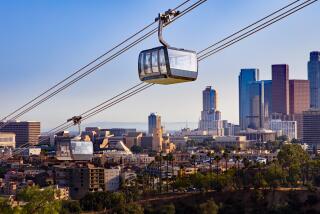Soaring Costs
Today’s high-tech ballooning--from Steve Fossett’s recent attempts to circumnavigate the globe in a satellite-guided spherical gondola to Dave Liniger’s planned launch Friday in a balloon that will expand to the size of the Houston Astrodome as it reaches 130,000 feet--bears little resemblance to the first public demonstration of ballooning on June 4, 1783. Joseph-Michel and Jacques-Etienne Montgolfier launched a paper balloon above a French market square using air heated in a pot of burning straw and wool.
Like Fossett and Liniger, the Montgolfier brothers, the sons of a paper magnate, were very rich. But there’s an important difference. The Montgolfiers pioneered ballooning as a scientific tool; they were interested in studying thermodynamics and their invention has since led to scores of scientific and military advances.
Today’s adventurers claim equally noble motives. When Fossett was asked whether he would help the Australian Defense Forces foot the bill for his $88,000 rescue in August, the multimillionaire Chicago stockbroker said that he was not considering paying for anything because “I believe what I was involved in was something that’s never been done before. . . . If people weren’t willing to do things for the very first time, think of what would not have gotten done in our civilization.”
In fact, Fossett has tried and failed to circumnavigate the globe 11 times, and dozens of others have failed before him. Perhaps it’s time for the United States to consider requiring high-risk enthusiasts to help offset rescue costs.
The human urge to soar is understandable. But what’s being gained beyond broken dreams and mounting rescue bills?
More to Read
Sign up for Essential California
The most important California stories and recommendations in your inbox every morning.
You may occasionally receive promotional content from the Los Angeles Times.









